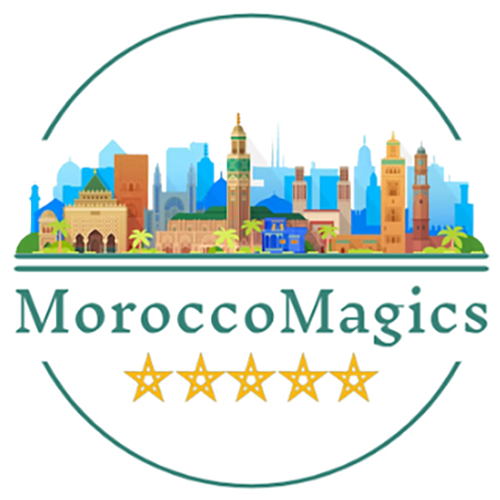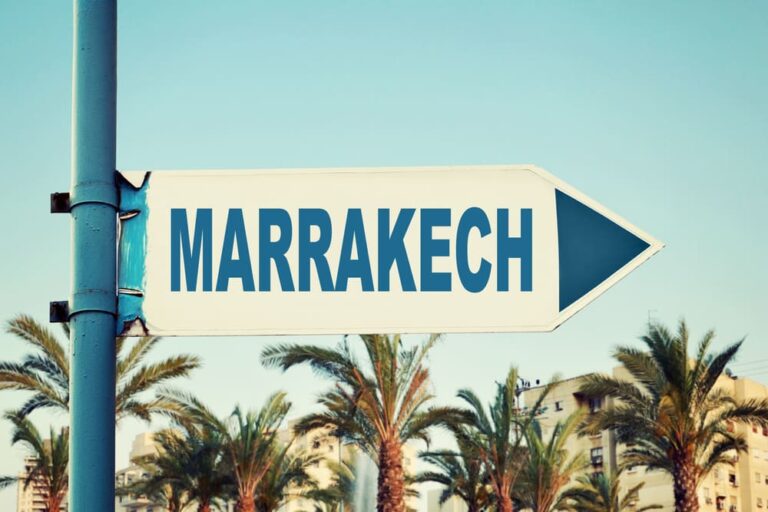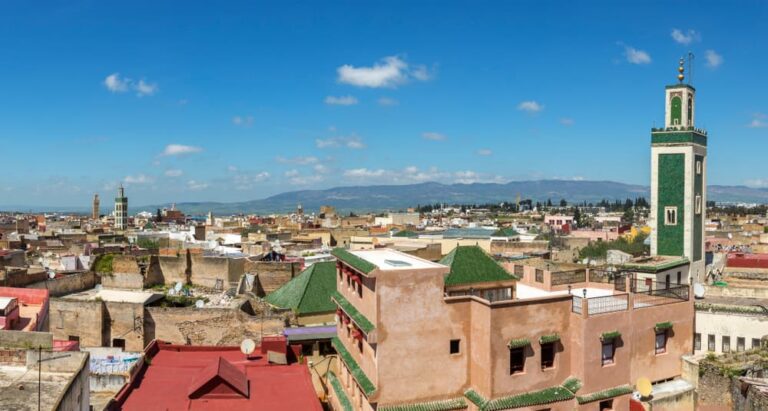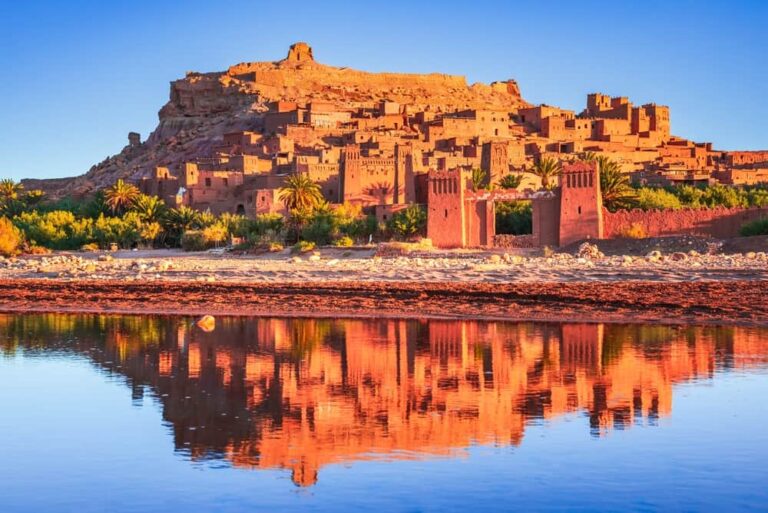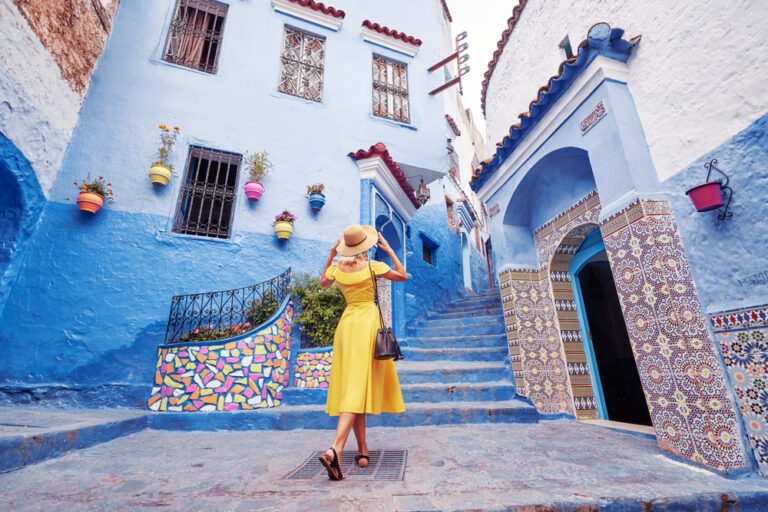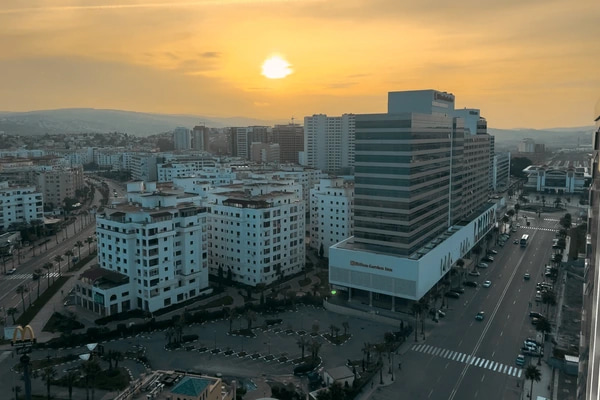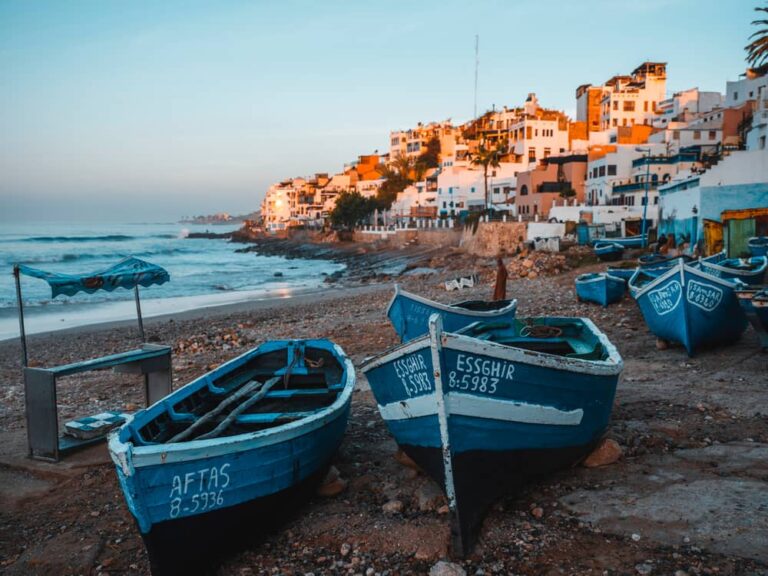Casablanca Travel Guide
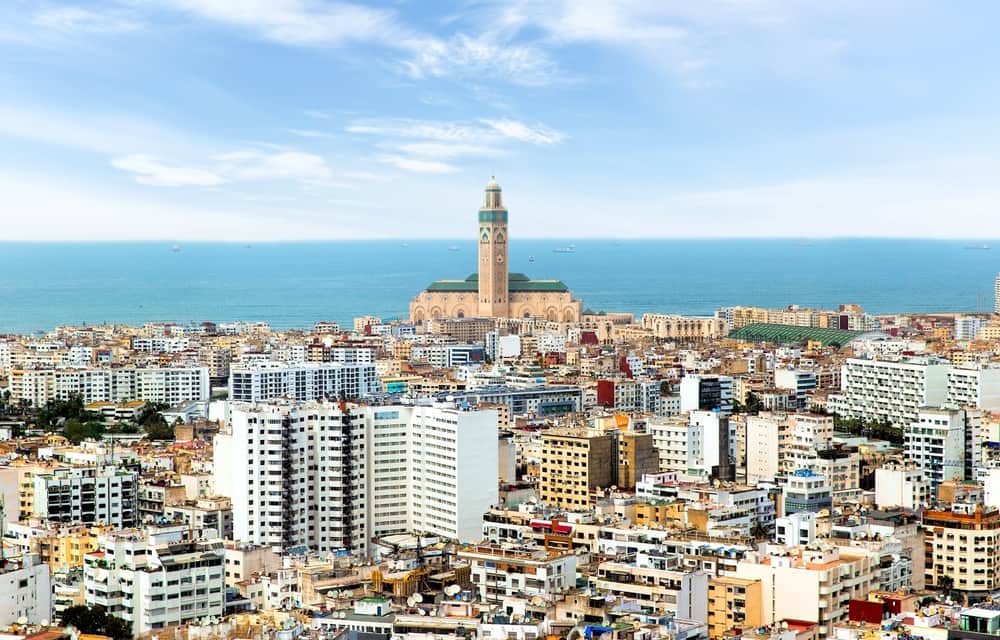
Casablanca is one of Morocco’s most well-known cities, offering a mix of modern life and rich history. Located along the Atlantic Ocean, this bustling city is famous for its stunning architecture, vibrant culture, and bustling markets. From grand mosques to lively streets filled with local vendors, Casablanca is a place where the past and present blend together. Whether you’re visiting for its cultural landmarks or to enjoy the coastal views, there’s something for everyone in this beautiful city.
For those who love to explore, Casablanca provides plenty of activities, from walking through the maze-like streets of the Old Medina to relaxing on the sandy beaches of Ain Diab. Food lovers will also enjoy the delicious street food and traditional Moroccan dishes available throughout the city. With its rich blend of French and Moroccan influences, Casablanca offers a unique experience that sets it apart from other Moroccan cities.
Getting to Casablanca is easy, whether you’re traveling from abroad or another city in Morocco. The next section will guide you on the best ways to arrive in this dynamic city, whether by plane, train, or even ferry.
Getting to Casablanca
Casablanca’s well-established transport network makes it one of the most accessible cities in Morocco. Whether arriving by air, rail, or sea, you’ll find multiple options to suit your travel style and budget. Here’s how you can reach Casablanca:
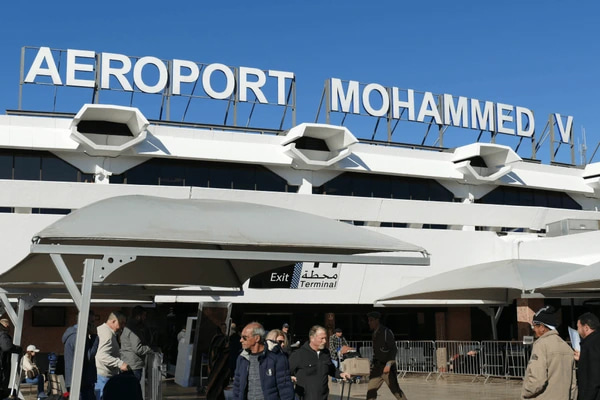
International Travel Options
For international travelers, flying into Casablanca is the most straightforward option. The city’s major airport, Mohamed V International Airport, serves as a central hub for flights. As the busiest airport in Morocco, it offers numerous flight options and modern facilities for a smooth arrival experience.
Direct Flights: Multiple international airlines fly directly to Casablanca from global hubs. Some key airlines include:
Royal Air Maroc: Morocco’s flagship airline offers direct flights to cities like New York, Washington, Paris, Madrid, and many others.
Air France, Emirates, British Airways, and Lufthansa: These airlines provide direct flights from major cities such as London, Frankfurt, Dubai, and Paris.
Low-cost carriers: Budget-conscious travelers may want to look for flights with low-cost airlines like Air Arabia, which also connects European cities to Casablanca.
Best Airports to Land in: Mohamed V International Airport is the most convenient for travelers heading to Casablanca. However, if you are flying into other airports like Marrakech Menara or Rabat-Salé, both located a few hours away from Casablanca, it’s easy to connect by train or road.
Visa and Entry Requirements: Morocco’s visa requirements vary depending on your nationality. Here’s what you need to know:
Visa-free entry: Citizens of countries like the United States, Canada, the United Kingdom, and most European nations do not need a visa for stays up to 90 days.
Visa-on-arrival: Some countries may qualify for a visa-on-arrival process, but it’s advisable to confirm with your local embassy before travel.
Entry formalities: Upon arrival, you’ll need to present a passport with at least six months of validity, as well as a completed entry card provided during your flight.
Getting to Casablanca from Other Cities in Morocco
For those already in Morocco, reaching Casablanca is easy thanks to the country’s modern transport infrastructure. Trains, buses, taxis, and even domestic flights provide multiple options for getting to the city.
Train routes and schedules: Morocco’s ONCF train service is one of the most efficient ways to travel between cities. Trains are clean, reliable, and offer both first and second-class tickets. Casablanca’s main train station, Casa Voyageurs, is centrally located and connects the city to other major destinations.
Marrakech to Casablanca: This route is popular for travelers looking to combine a visit to Morocco’s cultural capital with its largest city. The journey takes around 3 hours.
Rabat to Casablanca: The capital city of Rabat is less than an hour away from Casablanca, making it an easy day trip by train.
Fez to Casablanca: A 4-hour train ride takes you from the historic city of Fez to Casablanca, offering a scenic journey through Morocco’s landscape.
Bus services and private car options: Another affordable and flexible way to travel is by bus. Companies like CTM and Supratours offer air-conditioned, comfortable buses that connect Casablanca to other cities.
Grand taxis: If you prefer a more personal experience, grand taxis (shared taxis) can be a fast and economical way to travel between cities. These taxis hold multiple passengers and travel to major transport hubs.
Private transfers: For travelers seeking comfort and convenience, private transfers can be booked in advance for direct routes between cities and Casablanca.
Domestic flights: Although less common due to the availability of affordable train and bus services, domestic flights between Moroccan cities are an option for travelers in a hurry. Cities like Marrakech and Agadir have regular flights to Casablanca, though the costs are usually higher than taking the train.
Arriving by Ferry: For European travelers, ferries from Spain or France to Tangier or Ceuta provide an alternative travel route. While you cannot ferry directly into Casablanca, it’s easy to connect to the city via train or car from northern ports like Tangier.
Best Time to Visit Casablanca
Casablanca enjoys a Mediterranean climate influenced by its proximity to the Atlantic Ocean. The best time to visit depends on whether you prefer warm weather for outdoor activities or a quieter, more relaxed atmosphere during off-peak seasons.
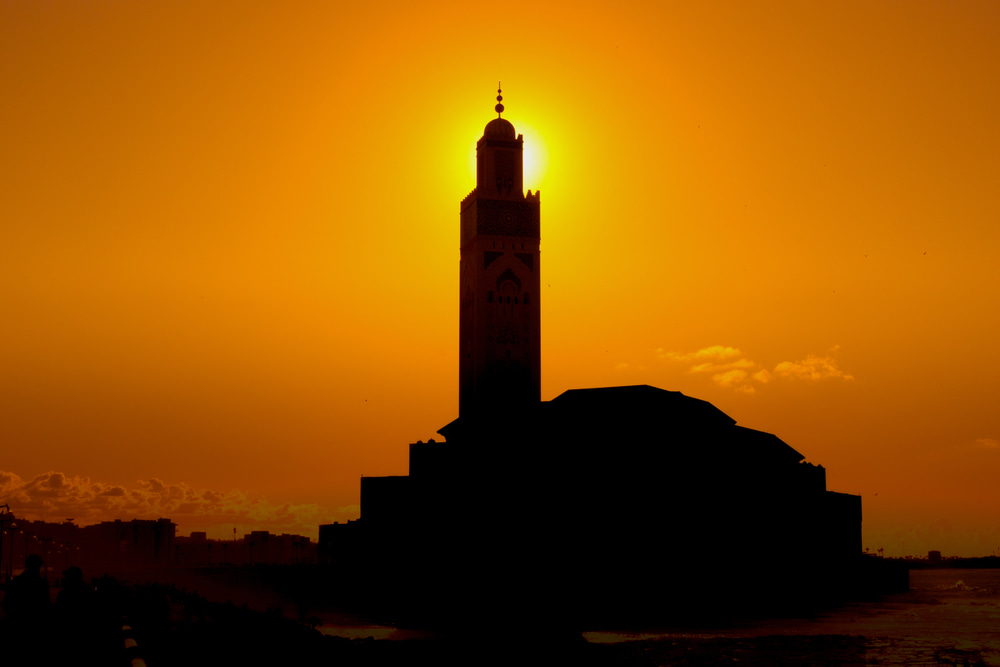
Casablanca’s Climate Across Seasons
Casablanca’s coastal location means it avoids the extreme heat that inland Moroccan cities experience during the summer. Here’s a breakdown of the weather throughout the year:
Spring (March-May): Spring is one of the most pleasant times to visit Casablanca. The temperatures range from 15°C to 22°C (59°F to 72°F), perfect for outdoor exploration. The city’s gardens and parks are in full bloom, and tourist numbers are lower compared to the summer months.
Summer (June-August): Summer is the peak tourist season, with temperatures ranging from 25°C to 30°C (77°F to 86°F). Visitors flock to Ain Diab Beach to enjoy sunbathing, swimming, and watersports. The city can feel crowded during these months, especially around popular tourist spots.
Autumn (September-November): Another great time to visit, autumn offers mild temperatures similar to spring. It’s a quieter time for tourism, making it ideal for those looking to avoid crowds.
Winter (December-February): Winters in Casablanca are mild compared to Europe or North America, with temperatures averaging 10°C to 15°C (50°F to 59°F). Although it can be rainy, the weather is generally pleasant for sightseeing.
Peak Tourist Seasons vs. Off-Peak Travel Benefits
Peak Season (Summer): The peak season offers the best weather for enjoying the city’s beaches and outdoor activities. However, you’ll need to book accommodations and tours in advance, as many tourists visit during this time.
Off-Peak Season (Spring and Autumn): These shoulder seasons are perfect for visitors seeking milder weather and fewer crowds. Prices for hotels and flights tend to be lower, and you’ll have more space to explore landmarks like the Hassan II Mosque and the Old Medina.
Major Festivals and Events to Plan Around
If you’re looking to experience Casablanca’s cultural life, planning your trip around local festivals and events can add excitement to your visit:
Casablanca Festival: This annual event celebrates Moroccan music, art, and dance. The festival takes place in various venues around the city and attracts both locals and tourists.
Mawazine Festival (in nearby Rabat): One of Morocco’s largest music festivals, featuring international stars and local artists. It’s just a short train ride from Casablanca, making it a convenient day trip.
Eid al-Fitr and Eid al-Adha: These religious festivals are marked with feasts, family gatherings, and special prayers. Although some shops and services may be closed during Eid, the celebrations provide a unique cultural experience.
Where to Stay in Casablanca
Casablanca offers a wide variety of accommodations, catering to different budgets and preferences. Whether you’re seeking a luxury stay, a cozy riad, or a budget hotel, there’s something for everyone.
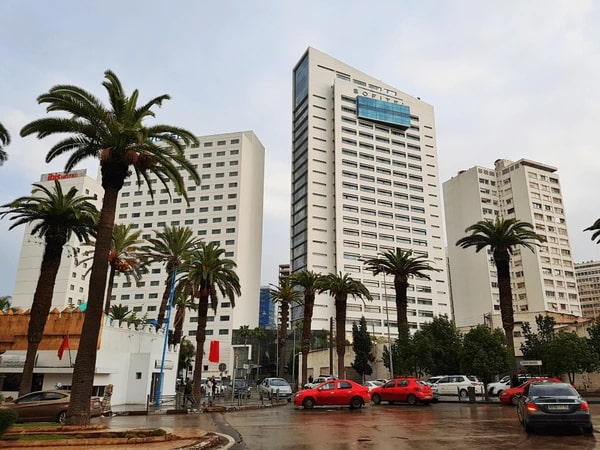
Types of Accommodations
Casablanca’s accommodation options include:
Luxury Hotels: For those seeking a high-end experience, Casablanca offers several luxury hotels with top-notch amenities. Properties like the Four Seasons and Hyatt Regency provide ocean views, fine dining, and spa facilities.
Riads: Traditional Moroccan guesthouses are known for their beautiful courtyards and personalized service. Staying in a riad offers a more authentic experience, with many located in the city’s older districts.
Budget Hotels and Hostels: Backpackers and budget travelers will find plenty of affordable accommodations. Hostels and budget hotels are centrally located, offering basic amenities at a fraction of the cost of luxury options.
Top Areas to Stay
Central Casablanca: Staying in the city center is ideal for those who want easy access to Casablanca’s main attractions, such as the Hassan II Mosque, the Old Medina, and the Royal Palace. The area is also close to business districts, making it convenient for work-related travel.
Habous Quarter: This historic district, also known as the New Medina, offers a mix of traditional Moroccan architecture and modern conveniences. Staying here allows you to experience the charm of old Casablanca while still enjoying nearby cafes, markets, and restaurants.
Corniche: If you prefer a coastal stay, the Corniche area offers stunning views of the Atlantic Ocean, along with access to Ain Diab Beach. The Corniche is also known for its lively nightlife, with bars, clubs, and restaurants lining the waterfront.
Maarif: Shoppers will love staying in the Maarif district, which is known for its modern shopping centers, luxury boutiques, and local markets. It’s the perfect area if you plan to do some serious shopping during your stay.
Recommended Riads and Hotels
Choosing between a riad and a modern hotel depends on the type of experience you’re looking for:
Riads: These are traditional Moroccan homes converted into guesthouses. They are often located in quieter, more historic areas of the city, offering a peaceful retreat with authentic Moroccan decor and hospitality. Examples include Riad Jnane Sherazade and Riad Hamdane.
Modern Hotels: Hotels like the Four Seasons, Sofitel Tour Blanche, and Kenzi Tower provide a more contemporary stay with amenities such as pools, fitness centers, and international dining options.
Tips for Choosing Accommodations
When deciding where to stay, consider the following:
Proximity to attractions: If you want to be close to Casablanca’s main sites, such as the Hassan II Mosque or the Old Medina, choose accommodations in the central area.
Access to the beach: For beachgoers, staying near the Corniche or Ain Diab Beach is ideal.
Budget: Casablanca offers a range of price points, so whether you’re traveling on a budget or seeking luxury, there are options for every traveler.
Exploring Casablanca
Casablanca is Morocco’s largest city, and exploring it can be an exciting adventure. Whether you prefer walking, using public transport, or renting a car, getting around the city is easy and convenient.
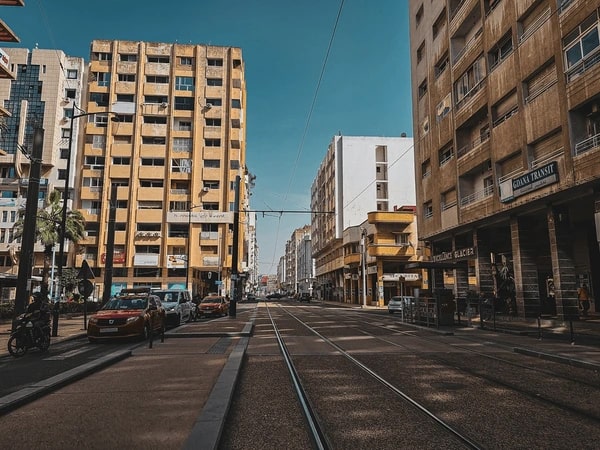
Getting Around Casablanca: Trams, Taxis, Buses, and Car Rentals
Casa Tramway: The Casa Tramway is one of the easiest ways to travel through Casablanca. It covers the main areas of the city, connecting neighborhoods to the city center and major landmarks. It’s affordable, clean, and efficient.
Tickets: Tram tickets can be purchased at tram stops or via mobile apps. Single tickets are inexpensive, and there are options for day passes.
Routes: The tram lines cover key areas such as Casa Voyageurs, the city center, Sidi Moumen, and Ain Diab Beach.
Buses: Casablanca’s bus system is another budget-friendly way to explore the city. While buses are reliable, they can be crowded during peak times. Bus stops are clearly marked, and routes connect residential areas to commercial centers and tourist attractions.
Taxis: There are two types of taxis in Casablanca:
Petite taxis: Small red cars that are ideal for short trips within the city. Make sure the meter is running, or agree on a price before starting your journey.
Grand taxis: Larger shared taxis that are used for longer journeys, such as trips to nearby cities. Grand taxis usually operate between major transport hubs.
Car rentals: For those looking for more independence, renting a car is a great option. However, be aware that Casablanca’s traffic can be heavy, especially during rush hours. Parking is available in many areas, but it’s best to ask your hotel for recommendations on safe parking spots.
Suggested Walking Routes for Discovering the City’s Hidden Gems
While public transport is convenient, some areas of Casablanca are best explored on foot. Walking gives you a chance to soak in the local atmosphere, discover hidden gems, and interact with locals.
Old Medina: One of the best places to explore on foot, the Old Medina is a maze of narrow streets filled with local vendors selling everything from spices to handmade goods. As you walk, you’ll encounter historic mosques, small cafes, and bustling markets.
Corniche Promenade: For a relaxing seaside walk, head to the Corniche Promenade. The views of the Atlantic Ocean, combined with the laid-back atmosphere of the beachside cafes and restaurants, make this a popular spot for both tourists and locals.
Things to Do in Casablanca
Casablanca is a dynamic city that blends modern architecture with historic landmarks, offering visitors a wide range of activities. Whether you’re interested in history, food, or outdoor adventures, there’s something for everyone.
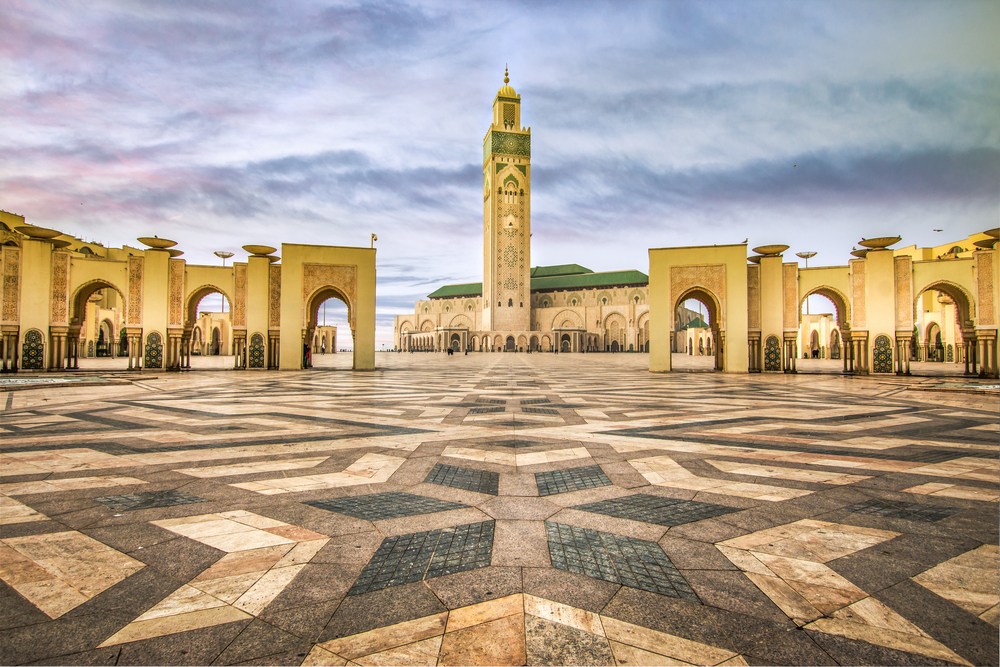
Iconic Landmarks
Hassan II Mosque: The Hassan II Mosque is one of the largest mosques in the world, and a visit to this architectural masterpiece is a must. Perched on the edge of the Atlantic Ocean, the mosque boasts intricate zellij (Moroccan tilework), marble floors, and a retractable roof. The mosque’s minaret, which stands 210 meters tall, is the tallest in the world, and its laser beam points toward Mecca at night. Non-Muslim visitors can take guided tours of the mosque, which are available at specific times throughout the day.
The Old Medina: Casablanca’s Old Medina offers a glimpse into the city’s past. This historic quarter is filled with winding streets, small shops, and local markets where you can buy handcrafted goods, spices, and traditional Moroccan attire. It’s a great place to explore on foot, and you’ll find plenty of opportunities to shop and interact with locals.
Rick’s Café: For fans of the classic film Casablanca, a visit to Rick’s Café is a must. While the movie was not filmed in the city, the café was designed to replicate the bar from the movie. With its elegant décor, live music, and menu of Moroccan and international dishes, Rick’s Café is a popular spot for tourists looking to relive a bit of cinematic history.
Outdoor Activities
Ain Diab Beach: Located along Casablanca’s Corniche, Ain Diab Beach is the city’s most popular spot for sunbathing, swimming, and watersports. The beach is lined with cafes and restaurants, making it a great place to relax after a day of sightseeing. In addition to swimming, visitors can rent surfboards and take lessons from local surf schools.
Anfa Place Mall and Beach Promenade: For a more laid-back day out, head to Anfa Place Mall and the nearby beach promenade. The mall offers a variety of shops, dining options, and entertainment, while the promenade provides scenic views of the ocean. It’s a perfect spot for a leisurely walk or a casual lunch.
Surfing: Casablanca is home to several surf spots that are great for beginners. Surf schools near Ain Diab Beach offer lessons and board rentals, making it easy to get started even if you’ve never tried surfing before.
Culinary Experiences
Casablanca is known for its diverse food scene, which blends traditional Moroccan flavors with international influences. Whether you’re enjoying a meal at a fine dining restaurant or sampling street food, you’ll find plenty of delicious options.
Street food: The Old Medina is a great place to sample local street food. Some must-try dishes include:
- Harira: A traditional Moroccan soup made with tomatoes, lentils, and chickpeas. It’s commonly eaten during Ramadan but can be found year-round.
- Pastilla: A sweet and savory pie made with layers of thin pastry, pigeon or chicken, almonds, and cinnamon. It’s a unique dish that highlights the blend of flavors in Moroccan cuisine.
- Kebabs and grilled meats: Street vendors offer a variety of grilled meats, served with fresh bread and spicy sauces.
Tea rituals: Moroccan tea, also known as mint tea, is a staple of the country’s culture. It’s served in nearly every café and restaurant in Casablanca, often alongside sweet pastries like baklava. Tea is traditionally poured from a height to create bubbles on the surface, a sign of good tea.
Must-visit restaurants: Casablanca offers a range of dining experiences, from fine dining to casual eateries.
- La Sqala: Located near the Old Medina, La Sqala is housed in a historic fortress and serves traditional Moroccan dishes in a beautiful garden setting.
- Le Cabestan: For fine dining with a view, head to Le Cabestan, which overlooks the Atlantic Ocean and offers a menu of Mediterranean and Moroccan dishes.
Shopping in Casablanca
Casablanca offers a mix of traditional markets and modern shopping centers, making it a great city for both souvenir shopping and high-end retail.
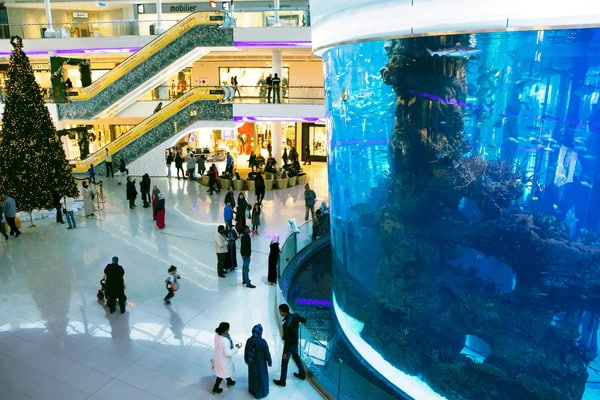
The Central Market (Marche Central): This bustling market in the heart of the city is a great place to buy fresh produce, spices, and traditional Moroccan crafts. The market is also home to several food stalls where you can enjoy freshly prepared seafood dishes.
Souks: Casablanca’s souks are filled with unique handmade goods, from rugs and pottery to jewelry and textiles. The souks in the Old Medina and the Habous Quarter are particularly popular with tourists.
Casablanca Mall and Modern Shopping Centers: For a more modern shopping experience, visit Morocco Mall or Anfa Place Mall. These shopping centers offer a variety of international brands, as well as cafes and entertainment options.
Nightlife and Entertainment
Casablanca has a lively nightlife scene, with various clubs, bars, and live music venues to choose from. Whether you’re looking for a quiet evening at a rooftop bar or a night of dancing at a club, there’s something for everyone.
Top clubs and bars: Some of the best nightlife spots in Casablanca include:
Sky 28: A rooftop bar located in the Kenzi Tower Hotel, offering stunning views of the city skyline. It’s a great place to enjoy a cocktail while watching the sunset.
Le Petit Rocher: A beachside restaurant and bar serving fresh seafood and live music in the evenings.
Bodega: A popular club that plays a mix of international and Moroccan music. It’s a great spot for those looking to dance the night away.
Late-night dining: For those who prefer a more relaxed evening, Casablanca’s Corniche is home to several restaurants that stay open late. You can enjoy traditional Moroccan dishes like tagine and couscous while taking in the views of the Atlantic.
Theaters and cinemas: Casablanca has several cinemas and theaters that showcase both Moroccan and international films. The Cinema Rialto is one of the city’s oldest and most famous theaters, known for its stunning Art Deco architecture.
Day Trips from Casablanca
Casablanca is not just an exciting city on its own, but also a great starting point for discovering other beautiful places in Morocco. Here are a few popular day trips you can take:
Visit Rabat, the Capital City
- Royal Palace: The official residence of the King of Morocco. While visitors can’t enter the palace, you can admire its grandeur from the outside and explore the surrounding gardens.
- Hassan Tower: This incomplete minaret is one of Rabat’s most famous landmarks. It’s part of a larger, unfinished mosque and offers a glimpse into Morocco’s historical architecture.
El Jadida
- Portuguese Cistern: A fascinating underground water chamber, known for its stunning reflections and peaceful atmosphere. It was used as a filming location for several movies.
- Mazagan Beach Resort: If you love beaches, this resort offers everything from sunbathing to water sports. It’s a perfect spot for a relaxed getaway by the Atlantic Ocean.
Trip to Chefchaouen, the Blue City (for extended stays): Chefchaouen, located in the Rif Mountains, is known for its striking blue-painted streets and buildings. It’s a bit farther from Casablanca, so it’s best for an extended trip. Explore the local markets, take scenic hikes, and soak in the peaceful atmosphere of this unique town.
Art and Culture
Casablanca isn’t just about beaches and landmarks—it’s also a hub for art and culture. Here’s how you can explore it:
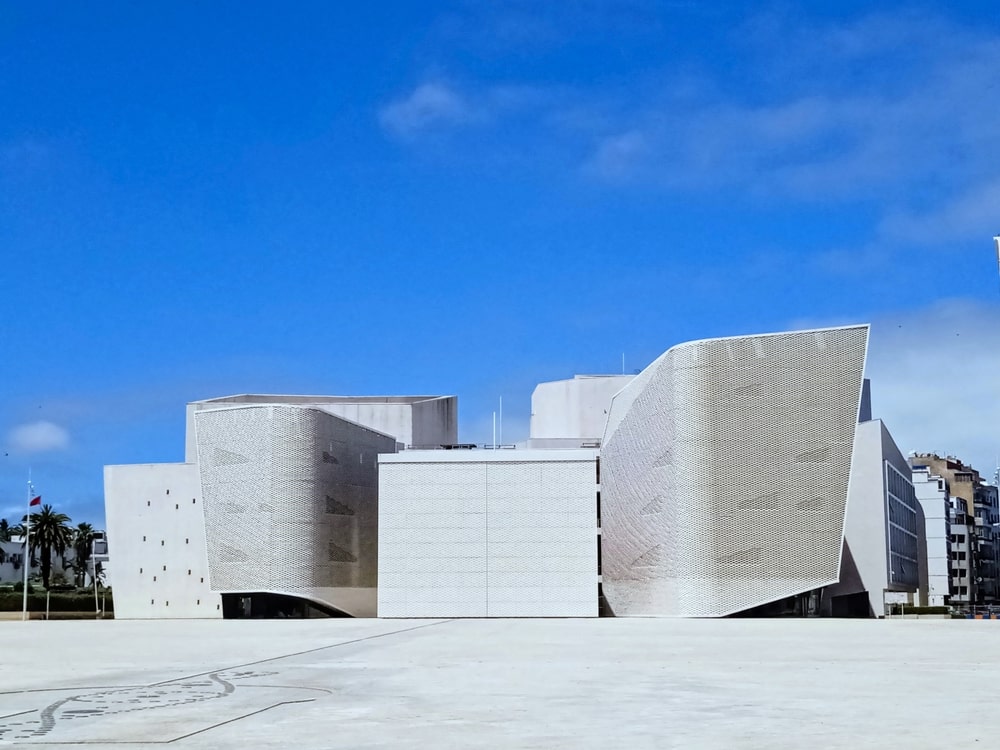
Casablanca’s Art Galleries: The city has several galleries showcasing local artists, giving you a chance to see modern Moroccan art up close. These galleries often highlight a mix of traditional and contemporary pieces.
Exploring Street Art: As you wander through the city, you’ll come across vibrant murals painted by local artists. Street art is an important part of Casablanca’s creative scene, adding color and meaning to the city’s walls.
Theatrical Performances, Exhibitions, and Cultural Festivals: Casablanca hosts numerous cultural events throughout the year. You can catch plays, attend art exhibitions, and join in festivals that celebrate everything from Moroccan heritage to modern culture.
Practical Tips for Casablanca
Before visiting Casablanca, it’s helpful to know some practical tips that will enhance your travel experience.
Local Customs and Etiquette
Dress modestly: While Casablanca is more liberal compared to other parts of Morocco, it’s still important to dress modestly, especially when visiting religious sites like the Hassan II Mosque. Women are advised to cover their shoulders and knees, while men should avoid wearing shorts in public spaces.
Greeting locals: Moroccans are known for their hospitality. A simple “Salam Alaikum” (peace be upon you) is a polite way to greet people. In return, you’ll often hear “Wa Alaikum Salam” (and peace be upon you).
Tipping: Tipping is customary in Morocco. In restaurants, a tip of around 10% is appreciated. It’s also common to tip taxi drivers and hotel staff.
Tips for Solo Travelers, Women, and LGBTQ+ Visitors
Solo travelers: Casablanca is generally safe for solo travelers. However, it’s advisable to avoid walking alone at night in quieter areas. Stick to busy streets and use trusted transportation options.
Women travelers: Women traveling alone in Casablanca may receive extra attention, but this is usually harmless. Dressing modestly can help avoid unwanted attention. It’s also a good idea to be cautious when accepting offers from strangers.
LGBTQ+ travelers: Morocco has conservative views on LGBTQ+ issues. Public displays of affection between same-gender couples are not accepted, and discretion is advised.
Currency Exchange, Tipping Etiquette, and Bargaining
Currency exchange: Morocco’s currency is the dirham (MAD). You can exchange money at banks, airports, and exchange bureaus. ATMs are widely available, especially in tourist areas. Major hotels and restaurants accept credit cards, but it’s always useful to carry some cash for smaller purchases.
Bargaining: Bargaining is common in markets and souks. When shopping for goods like rugs, pottery, or jewelry, it’s expected that you negotiate the price. Start by offering around half of the seller’s initial price and work your way toward a fair deal.
Wi-Fi, SIM Card Options, and Staying Connected
Wi-Fi: Free Wi-Fi is widely available in most hotels, cafes, and restaurants. However, the speed may vary depending on your location.
SIM Cards: If you need reliable mobile data during your trip, consider purchasing a local SIM card. Providers like Maroc Telecom, Orange, and Inwi offer affordable data packages. SIM cards can be purchased at the airport, in phone stores, or even at convenience shops.
Safety and Health in Casablanca
While Casablanca is considered a safe city, taking precautions is important to ensure a smooth and worry-free trip.
Is Casablanca Safe? Travel Safety Tips and Areas to Avoid
General safety: Like any major city, Casablanca has areas that are more prone to petty crime, such as pickpocketing. It’s important to stay alert in crowded places like markets and public transportation hubs. Keep your belongings secure, avoid flashing valuables, and be cautious when withdrawing money from ATMs.
Safe areas: Central Casablanca, particularly around the Hassan II Mosque and the Corniche, is generally safe for tourists. However, it’s advisable to avoid wandering into less-touristy areas, especially at night.
Scams to avoid: Some tourists may encounter unofficial “guides” offering tours or assistance in exchange for money. Politely decline their services and rely on licensed guides and tour operators instead.
Health Considerations: Vaccines, Pharmacies, and Emergency Numbers
Vaccines: Ensure your routine vaccinations are up to date before traveling to Morocco. Vaccinations for Hepatitis A and Typhoid are recommended for travelers.
Pharmacies: Pharmacies are widespread in Casablanca, and most pharmacists speak French or English. They are well-stocked with both prescription and over-the-counter medicines. If you require medication during your trip, pharmacists can provide assistance.
Emergency services: In case of a medical emergency, Casablanca has several well-equipped hospitals and clinics. It’s also advisable to carry travel insurance that covers medical expenses and evacuation if necessary.
Emergency numbers:
- Police: 19
- Ambulance: 15
- Fire department: 15
Travel Insurance Recommendations
While Morocco is generally safe and healthcare services are available, it’s recommended to have travel insurance. This will ensure that you are covered for any unexpected incidents, such as medical emergencies, trip cancellations, or lost luggage.
Conclusion
Casablanca is a city of contrasts, where modernity meets tradition. From its stunning coastal views to its historic landmarks, the city offers a wealth of experiences for visitors. Whether you’re drawn by its rich history, bustling markets, or vibrant food scene, Casablanca is a destination that promises something for every traveler. With easy access from international cities and a variety of transportation options within Morocco, it’s a city that is not only fascinating but also convenient to explore.
As you plan your trip to Casablanca, keep in mind the practical tips provided here to ensure a safe and enjoyable visit. From the best times to travel to how to navigate the city, you’re now well-prepared to make the most of your time in Casablanca.
FAQs
Yes, Casablanca is an excellent destination for tourists. It offers a unique blend of modern and historic attractions, from the awe-inspiring Hassan II Mosque to the bustling Old Medina. Whether you’re interested in culture, history, or simply relaxing by the beach, there’s something for everyone.
Wandering alone in poorly lit or quiet areas, especially at night.
Accepting offers from unofficial guides.
Flashing valuables, especially in crowded markets or on public transportation.
For the most part, Casablanca is safe at night, especially in busy, well-lit areas like the city center and the Corniche. However, it’s always a good idea to stay alert, avoid isolated areas, and use taxis or other forms of reliable transportation when traveling after dark.
